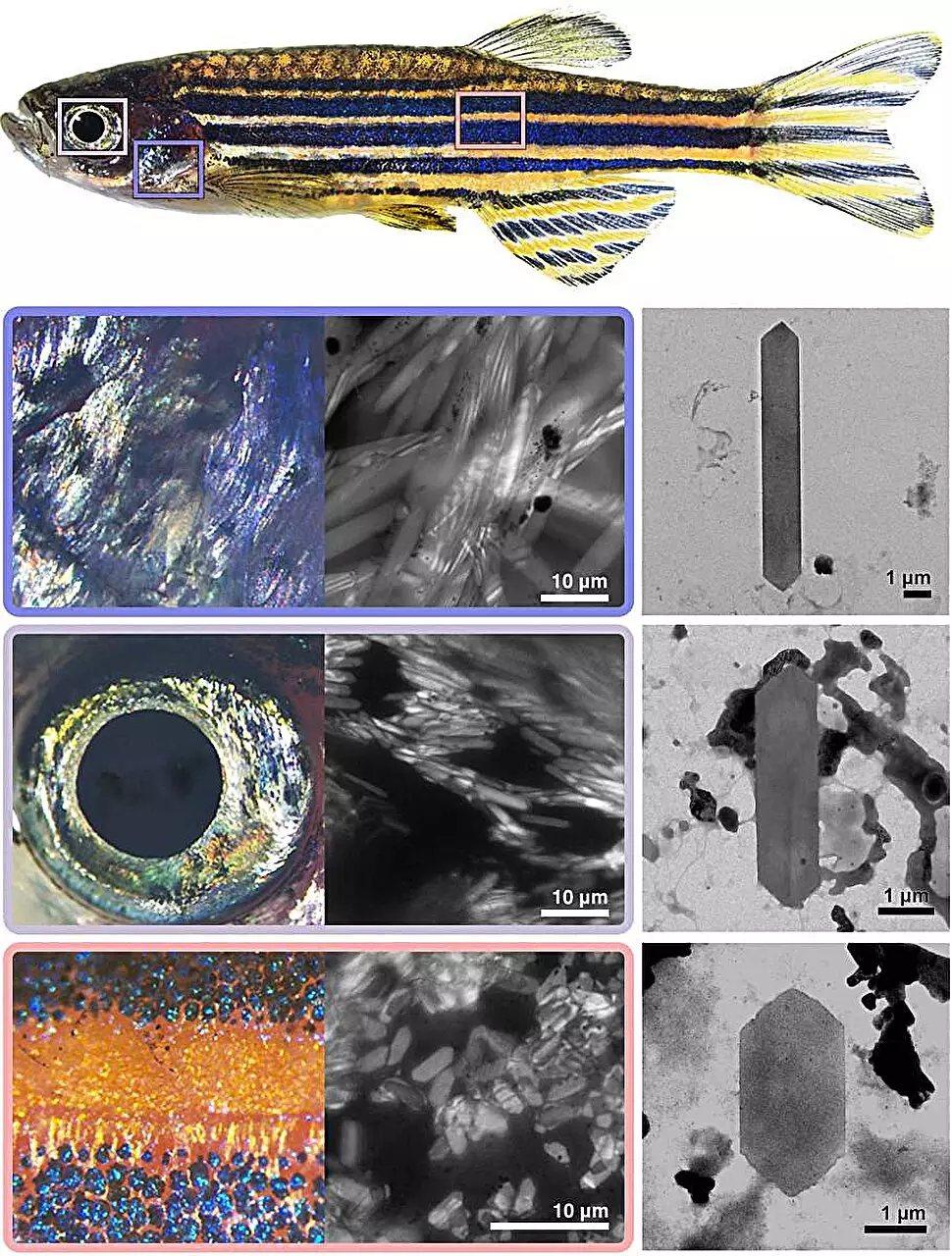What unites the vivid beauty found in living organisms like fish and chameleons with the fictional world of “Breaking Bad?” The unexpected answer lies in their ability to produce crystals, albeit for vastly different purposes. While Walter White, the chemistry teacher turned methamphetamine manufacturer, resorts to his chemical knowledge to create illicit drugs, nature showcases a myriad of organisms that synthesize crystals for practical, beneficial functions. From aiding in vision to enabling camouflage, the biological world flourishes through the manipulation of two simple molecules: guanine and hypoxanthine. This exceptional variety, generated from such straightforward ingredients, has piqued researchers’ curiosity, sparking an investigation into how life forms construct these diverse and functional crystals.
Recent research led by the Weizmann Institute of Science has revealed remarkable insights into how the zebrafish achieves an extraordinary array of crystal types within its body. This freshwater fish, easily identifiable by its striking colors and playful nature, possesses tissues that house different crystals, each with distinct shapes, compositions, and arrangements. Dr. Dvir Gur and his team employed advanced imaging techniques to scrutinize these crystals, discovering not only their varying morphology but also the genetic and biochemical factors governing their formation.
Using an electron microscope, the team’s observations confirmed that the crystals in the zebrafish varied significantly between different body parts. The operational protective cover found in the gills showcased long and narrow crystals, in contrast to the shorter, more compact formations present in the eyes and skin. This intriguing disparity offered researchers a unique vantage point to explore crystal formation without the confounding influence of cross-species comparison. By leveraging the genetic uniformity of the zebrafish, the team embarked on a quest to unravel the biological underpinnings of crystal synthesis.
Understanding the Role of Molecular Ratios
A deeper dive into the crystal formation process led to a pivotal discovery regarding the molecular ratios of guanine and hypoxanthine. Much like a chef carefully balancing ingredients to achieve the desired dish, researchers found that altering the proportion of these two molecules significantly affected crystal structure and function. The zebrafish serves as a laboratory of sorts, allowing scientists to artificially recreate crystals with specific ratios of guanine and hypoxanthine. This manipulation of molecular ratios not only aids in understanding the functional nuances of the crystals but also mirrors natural culinary processes.
The implications are profound. By examining variations in crystal shape and optical properties resulting from differing molecular ratios, researchers glean insights into how organisms utilize these structures. They discovered, for instance, that diverse optical properties can aid in communication, camouflage, and even predator evasion tactics, showcasing the evolutionary benefits of this crystalline marvel.
To unlock the mechanisms behind this crystalline artistry, Rachel Deis, a PhD student, meticulously isolated the crystal-producing cells known as iridophores. With collaboration across disciplines, Deis’s team identified key proteins and enzymes present within the iridophores. Their analysis revealed a fascinating paradox: iridophores contained a greater abundance of certain enzymes responsible for crystal building blocks while simultaneously exhibiting diminished levels of others in the same protein family.
This discovery prompted a deeper investigation into how the unique enzyme balance within iridophores governs the ratios of guanine and hypoxanthine. It became evident that variations in enzyme types and quantities impact crystal properties. Intriguingly, humans possess a single enzyme required for guanine preparation, while zebrafish have five distinct enzymes serving similar functions. This multiplicity provides the fish with the flexibility to craft a range of crystals without compromising critical cellular processes.
To validate their findings, the research team engineered zebrafish that lacked the enzyme pnp4a, an essential component for synthesizing crystalline guanine. Observations of these modified fish revealed a significant transformation in the crystal morphology—they exhibited fewer eye crystals and changed from elongated shapes to cubic forms typical of those found in skin cells. This pivotal experiment reinforced the team’s hypothesis regarding the enzyme balance’s critical role in determining crystal structures.
The overarching narrative encapsulated by this research extends beyond the realm of biology. It illustrates a sophisticated interplay between genetics, biochemistry, and quantum properties, culminating in the creation of aesthetically and functionally diverse crystals from simple molecular ingredients. The collaborative nature of the research team underscores the value of interdisciplinary approaches in tackling complex scientific inquiries.
The revelations stemming from zebrafish crystal research contribute to a broader understanding of nature’s mechanisms, shedding light on possible pathways for biomimetic material science. The intricate relationship between molecular simplicity and functional complexity serves as a reminder of the elegance inherent in biological systems. By decoding the “recipes” that nature employs to assemble these stunning crystalline formations, researchers pave the way for innovative applications and deepen our appreciation for the intricate beauty present in the natural world. The journey of understanding these biological marvels has only just begun, with the potential for exciting discoveries on the horizon.


Leave a Reply